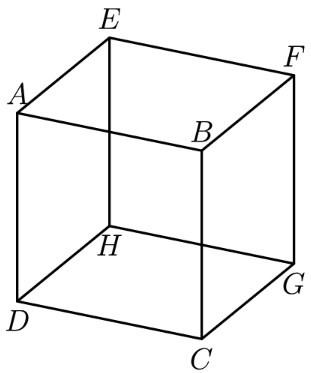2015 AMC 8
Complete problem set with solutions and individual problem pages
Problem 12 Medium
How many pairs of parallel edges, such as and or and , does a cube have?

- A.
- B.
- C.
- D.
- E.
Answer:C
Solution 1
We first count the number of pairs of parallel lines that are in the same direction as . The pairs of parallel lines are , , , , , and . These are pairs total. We can do the same for the lines in the same direction as and . This means there are total pairs of parallel lines.
Solution 2
Look at any edge, let's say . There are three ways we can pair with another edge. , , and . There are 12 edges on a cube. 3 times 12 is 36. We have to divide by 2 because every pair is counted twice, so is total pairs of parallel lines.
